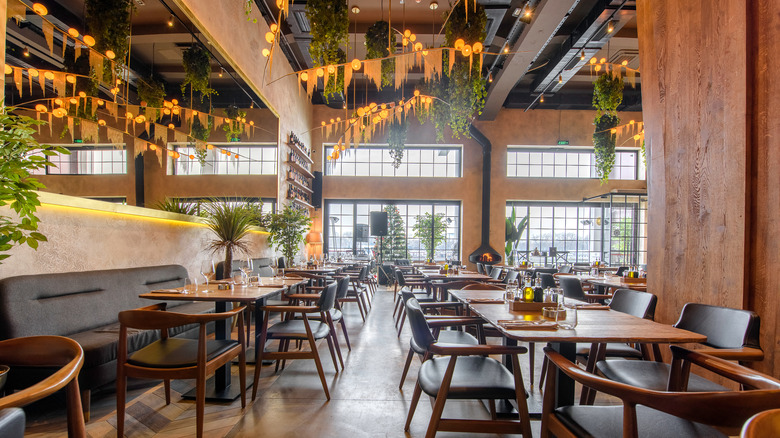Why The Cost Of Eating Out Will Likely Continue To Increase
Food inflation has become a fact of life for Americans, as unavoidable when supermarket shopping for home-cooked meals as it has been when dining out at a favorite restaurant. In June, The Guardian noted that Americans were facing higher inflation than they had in 40 years. And unfortunately, the U.S. Bureau of Labor Statistics' (BLS) Consumer Price Index data for July and August provided scant reason for optimism, as the food index continued to rise overall during both months.
The factors playing into the month-over-month inflationary price increases are well-documented and notably include supply chain issues that began during the coronavirus pandemic and have worsened as a result of the war in Ukraine, per New York Times. But the reasons are almost beside the point for American consumers, who in many cases have had to make tough decisions — from changing brands or stores to nixing perceived luxury items — in order to stay within their food budgets.
Of course, it should be pointed out that the BLS' Consumer Price Index differentiates between the inflationary pressures felt at grocery stores (represented by their food at home index) and the rising prices occurring at restaurants (the food away from home index). These indexes are not always aligned. In fact, as Nation's Restaurant News observes, the gap between the two is larger right now than it has been in the past 40 years.
The restaurant gap explained
As it happens, the 5.5% gap favors dining out at restaurants. According to the BLS' Consumer Price Index for August, the food at home index spiked 13.5%, while the food away from home went up a more modest 8%. But that still may not benefit restaurant goers, since Nation's Restaurant News reports that many restaurant owners are taking advantage of the disparity to hike prices, and this trend is likely to continue.
"Menu pricing seems poised to remain elevated well above historical averages for the next several months," research analyst Mark Kalinowski told Nation's Restaurant News. "With grocery prices continuing to rise at a faster rate than restaurant prices, and with commodity-cost inflation remaining a huge challenge — coupled with what has been so far fairly manageable consumer resistance to menu price increases — we expect that U.S. restaurants will continue to raise menu prices at a meaningfully higher-than-historical-average rate over the remainder of 2022."
To be fair, restaurants are dealing with their own inflation issues, including water and gas costs that have climbed as much as 85% over the past three years, per New York Times. Other costs of doing business have also risen appreciably, from rent and labor to maintenance and upgrading old equipment. Consumers, however, do have a choice. So which is dining in or dining out more affordable? Depending on the type of restaurant you favor (quick-service, for example), they might actually be pretty similar, Nation's Restaurant News observes.

